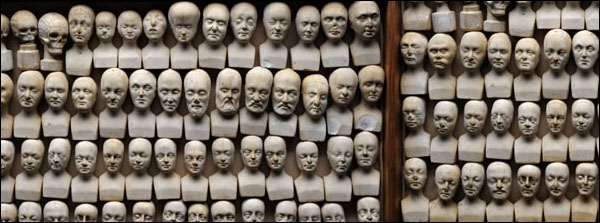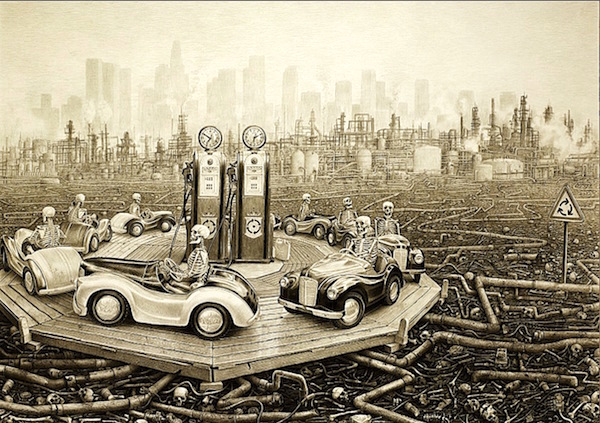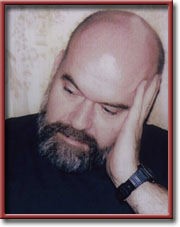The None-Too-Merry Merry Go Round

“So, in effect, government is taxing the rich, who provide most of the revenue to fund transfers, in order to enable the poor to pay for a relatively unchanging healthcare package that has become progressively more expensive and whose provision fattens the wallets of hospital and health-insurance executives, doctors, and other healthcare providers.” —Sanford Rose
Dolors & Sense
By Sanford Rose

KISSIMMEE Florida—(Weekly Hubris)—9/7/2015—As virtually everyone knows, the distribution of pretax income in the US has become progressively more unequal. The top one percent of earners now garner more than 20 percent of total income, which is about twice the percentage they appropriated in the late 1970s.
But, say many, pretax income tells only part of the story. Transfer payments made by government to the less advantaged counterbalance, or at least attenuate, the income gains of those at the top.
The largest category of transfer payments is healthcare, which rose from about 20 cents of the transfer dollar in the late 1970s to between 40 and 45 cents today.
This doubling did not occur because the poor received more healthcare services.
It occurred largely because of increases in the cost of basic healthcare that far outstripped the rate of general inflation.
So, in effect, government is taxing the rich, who provide most of the revenue to fund transfers, in order to enable the poor to pay for a relatively unchanging healthcare package that has become progressively more expensive and whose provision fattens the wallets of hospital and health-insurance executives, doctors, and other healthcare providers.
These are among the richest of income earners. For example, there are more doctors among the top 1 percent of earners than any other professionals, including lawyers.
But hasn’t the quality of healthcare improved, if not its quantity?
Undoubtedly for some. But perhaps not for the poorest income recipients, whose longevity may actually be decreasing and, if increasing absolutely, is doing so at a much smaller pace than that of the more affluent.
A 55-year-old American male in the top decile of the income distribution will, on average, live eleven years longer than a 55-year-old male in the bottom decile of the distribution. A few decades ago, this income-driven life-expectancy premium was only six years.
The increasing skewness in gross incomes unquestionably helps to engender resentment and stress, which encourage over-eating and smoking, which in turn contribute to the illnesses that shorten lifespans.
Transfers to fund healthcare don’t appear to work.
Indeed, if poor health outcomes are highly correlated with decreasing shares of the pretax income pie, the fact that transfers are required virtually guarantees that they won’t work.
The country desperately needs a higher minimum wage, which the scholarly consensus now suggests will not reduce employment opportunities, at least not in the short run. It also needs training programs that are more flexibly designed to meet the requirements of those who are discouraged by years of joblessness and underemployment and whose attention spans may be limited by pressing financial worries.
Such approaches may not reduce the Gini coefficient for income inequality, but they could blunt its rate of rise.
The present merry go round—tax the rich in order to give to the poor so they can repay the rich—is getting us nowhere, medically and morally, as well as definitionally.
![]()
Note: This essay first appeared in The Orlando Sentinel [http://articles.orlandosentinel.com/2014-05-22/news/os-ed-rich-versus-poor-myword-052214-20140521_1_health-care-income-inequality-poor-health-outcomes], to which Sanford Rose is a regular contributor; the image illustrating the piece derives from http://collapseofindustrialcivilization.com/2013/01/11/earth-to-humans-get-off-your-merry-go-round-ride-to-extinction/.

2 Comments
Tim Bayer
Hi Sanford,
It is nice to see a new post from you on WH.
The healthcare issue is extremely complex and often obfuscated. To pick one point, taxing the rich to pay for healthcare for poor, is probably missing the larger picture.
A few points you did not mention that are large contributors to the healthcare problem:
* Doctors often (usually?) do not know how much their “room visits” cost a patient, or even what billing rate the hospital is charging the patient (healthcare) for their visit. Each time a doctor visits a room, “just to check the chart”, causes the patient to be billed — and the doctor has no idea what their billing rate is. They just know that they must visit each room to get paid. A doctor might be paid perhaps $50.00 for a short room visit, but the patient may be charged $75.00, $100.00, $150.00 or more per visit! A clear incentive for the doctor to just stop in when there is no need for them to visit. A nurse could alert them if there are concerning numbers or readings on any of the myriad machines/tests.
* Doctors, nurses and medical practitioners are terrified to be sued for malpractice and sensitive parents or patients go overboard with tests. Hence when only a single test is needed (like a bilirubin level), the parent/patient (“just to be sure”) or the health care provider (“to avoid possible malpractice lawsuit”) will insist that they run a full battery of blood test, when only one test is needed.
* Parents of children with the common cold, a sprained ankle, … etc., an issue that is clearly short term and not severe, will bring the child into the doctor to get medicine or an expensive X-ray or MRI, “just to be safe”.
* The cost of medicines has skyrocketed. That is a huge issue that has gone on too long unchecked.
* AND MOST IMPORTANTLY: NO ONE KNOWS THE ACTUAL COST OF HEALTH CARE PROCEDURES!!!! What is the cost for an appendicitis at Hospital X? What is the cost for the same procedure at Hospital Y? What is cost for an anesthesiologist? The actual costs of services IS NEVER KNOWN!!! —— UNTIL YOU (or the insurance company) GET THE BILL. If it costs 2x more for the same procedure at hospital X than hospital Y and YOU – the consumer/health care user – must pay the difference, guess what would happen to health care costs?
Hence, It is a complicated issue and there are many contributing factors to the cost of health care.
– Tim
S. Rose
Of course, the problem has many facets. Fee for services is a poor way to regulate health care. Doctors have, as you have noted, every incentive to over-test, both to enhance income, especially when they own the testing facilities, and to protect themselves from malpractice suits. The Affordable Care Act has introduced incentives that reward doctors for improving patient wellness rather than simply increasing the number of visits or prescribed tests. There is some preliminary evidence that these incentives are changing behaviors, resulting in better care for patients, particularly those with chronic ailments; e.g., diseases associated with metabolic syndrome.
Hospital costs are, as you again noted, are a major problem. Contributing to this problem is the wave of mergers and acquisitions in the industry. Economists have long noted that rising concentration ratios prefigure price fixing and price gouging in virtually every industry. This is perhaps the most worrisome trend in the health area.
The rate of rise in medical costs slowed briefly in the immediate post-recession period. That’s probably because the recession bit into medical budgets. Recent data indicate that, sadly, the “kink” in the curve has disappeared.